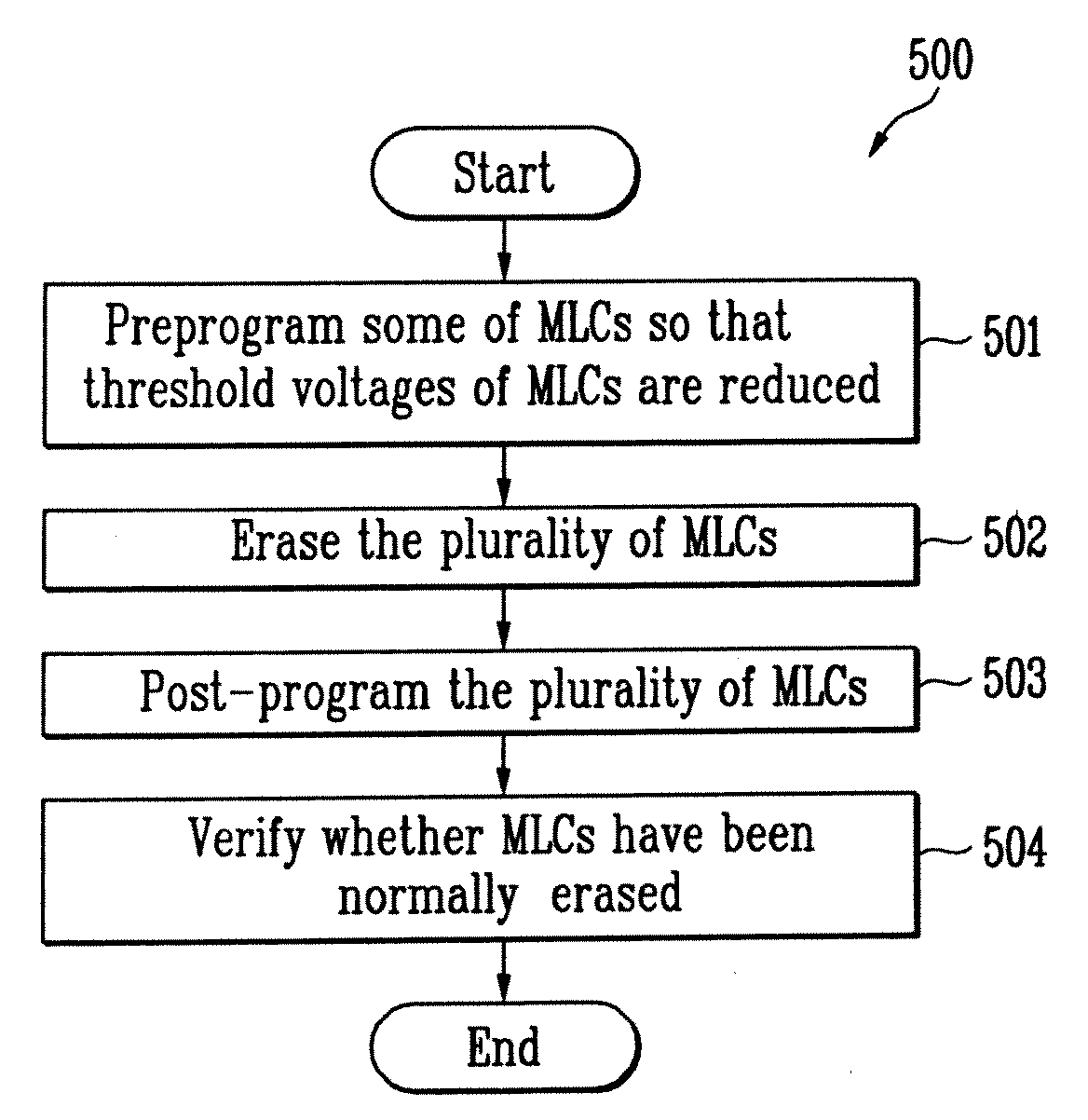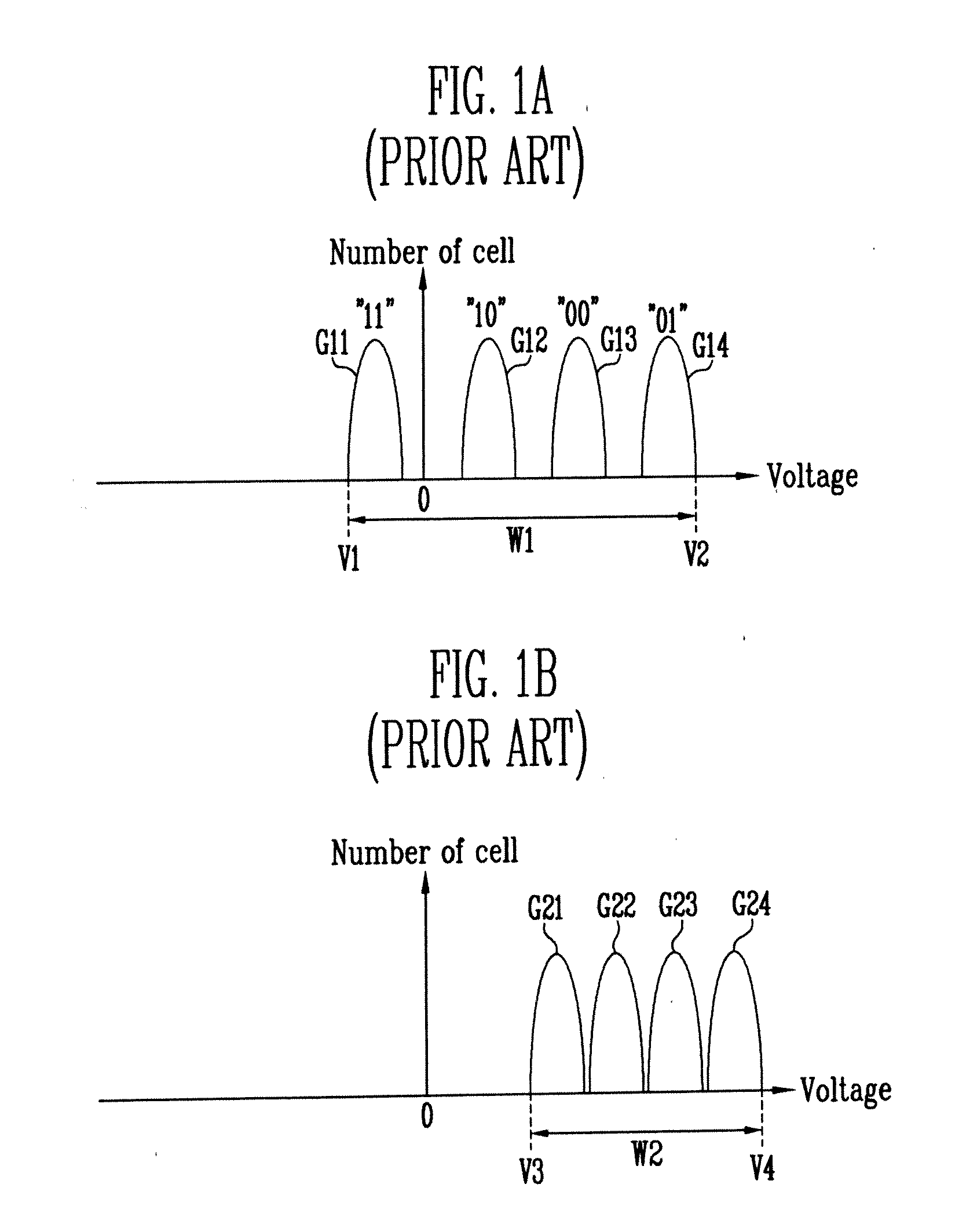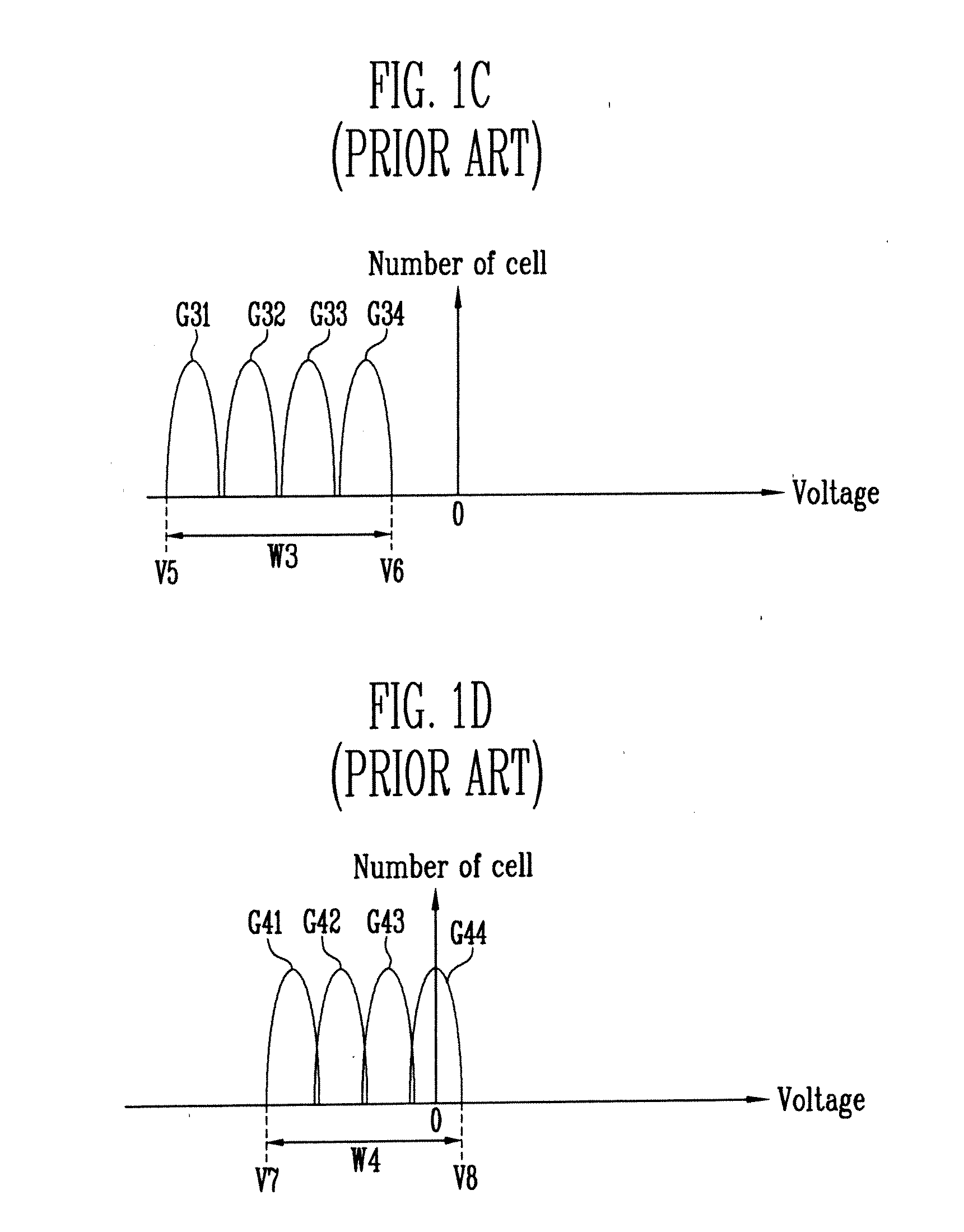Erase Method of Flash Memory Device
a flash memory and erase method technology, applied in static storage, digital storage, instruments, etc., can solve the problems of high probability of fail in the erase process of mlcs, increase overall program time, so as to reduce the overall program time, improve the threshold voltage distribution of mlcs, and reduce the failure occurrence ratio
- Summary
- Abstract
- Description
- Claims
- Application Information
AI Technical Summary
Benefits of technology
Problems solved by technology
Method used
Image
Examples
first embodiment
[0166]FIG. 17 is a flowchart illustrating a program method according to the present invention. The program method is related to program of MLCs.
[0167]One (e.g., WL1) of the word lines WL1 to WLJ is selected (601). As a start program voltage (refer to VPA in FIG. 23) is applied to the selected word line WL1, the MLCs Me11 to Me1K or Mo11 to Mo1K connected to the selected word line WL1 are programmed (602). Thereafter, MLCs (e.g., Me11 to Me15 or Mo11 to Mo15), each having threshold voltages lower than a predetermined voltage, of the MLCs Me11 to Me1K or Mo11 to Mo1K, is selected (603). The step (603) will be described in more detail below with reference to FIG. 18.
[0168]The lower bit register 230 of each of the page buffers PB1 to PBK senses a voltage (e.g., VCC) of the sensing node SO in response to the read control signal (LREAD1) and stores the lower sensing data (SL1) of logic “0” depending on the sensing result, so that it is initialized.
[0169]Thereafter, as a verify voltage (re...
second embodiment
[0219]FIG. 24 is a flowchart illustrating a program method according to the present invention. This method is related to program of MLCs.
[0220]One (e.g., WL1) of the word lines WL1 to WLJ is selected (701). As a start program voltage (refer to VA1 in FIG. 25) is applied to the selected word line WL1, the MLCs Me11 to Me1K or Mo11 to Mo1K connected to the word line WL1 are programmed (702).
[0221]The operation of the page buffers PB1 to PBK in the step (702) is the same as that of the page buffers PB1 to PBK in the step (620), which have been described with reference to FIG. 20. Description thereof will be omitted.
[0222]Thereafter, it is determined whether the number of program cycles, which is being executed, is P (703). If the number of program cycles, which is being executed, is not P in the step (703), the start program voltage (VA1) is increased as much as the step voltage (VS) (704). As a result, the word line WL1 is supplied with a start program voltage (VA2) that has risen fro...
third embodiment
[0229]FIG. 27 is a flowchart illustrating a program method according to the present invention. This method is related to program of SLCs.
[0230]One (e.g., WL1) of the word lines WL1 to WLJ is selected (601′).
[0231]As the selected word line WL1 is supplied with a start program voltage (refer to VSA in FIG. 28), SLCs Me11 to Me1K or Mo11 to Mo1K connected to the selected word line WL1 are programmed (602′).
[0232]Thereafter, SLCs (e.g., Me11 to Me15 or Mo11 to Mo15), each having threshold voltages lower than a predetermined voltage, of the SLCs Me11 to Me1K or Mo11 to Mo1K, are selected (603′). Though detailed steps of the step (603′) has not been shown, the step (603′) can be performed in the same manner as that described with reference to FIG. 18.
[0233]The lower bit register 230 of each of the page buffers PB1 to PBK senses a voltage (e.g., VCC) of the sensing node SO in response to the read control signal (LREAD1) and stores the lower sensing data (SL1) of logic “0” depending on the ...
PUM
 Login to View More
Login to View More Abstract
Description
Claims
Application Information
 Login to View More
Login to View More - R&D
- Intellectual Property
- Life Sciences
- Materials
- Tech Scout
- Unparalleled Data Quality
- Higher Quality Content
- 60% Fewer Hallucinations
Browse by: Latest US Patents, China's latest patents, Technical Efficacy Thesaurus, Application Domain, Technology Topic, Popular Technical Reports.
© 2025 PatSnap. All rights reserved.Legal|Privacy policy|Modern Slavery Act Transparency Statement|Sitemap|About US| Contact US: help@patsnap.com



